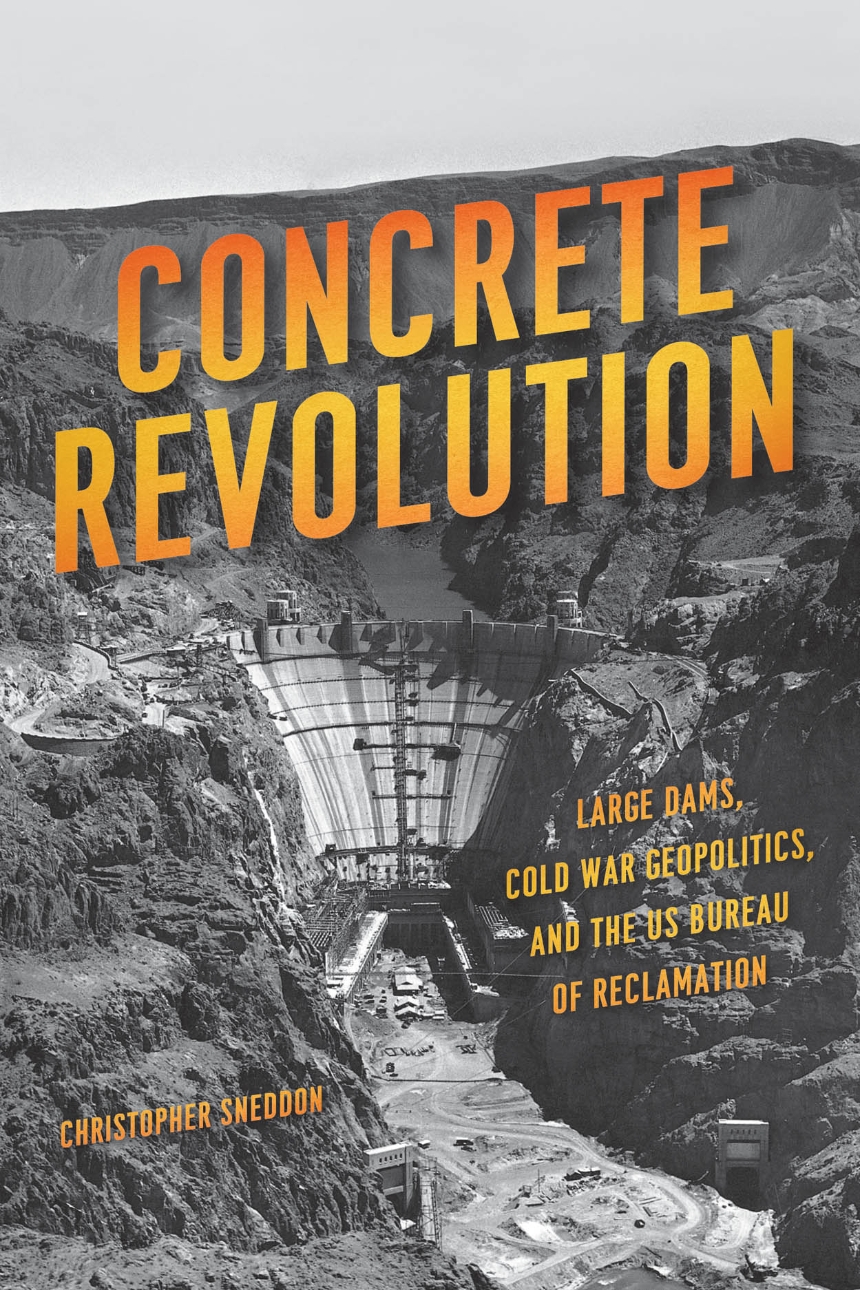Concrete Revolution
Large Dams, Cold War Geopolitics, and the US Bureau of Reclamation
9780226284316
9780226284453
Concrete Revolution
Large Dams, Cold War Geopolitics, and the US Bureau of Reclamation
Water may seem innocuous, but as a universal necessity, it inevitably intersects with politics when it comes to acquisition, control, and associated technologies. While we know a great deal about the socioecological costs and benefits of modern dams, we know far less about their political origins and ramifications. In Concrete Revolution, Christopher Sneddon offers a corrective: a compelling historical account of the US Bureau of Reclamation’s contributions to dam technology, Cold War politics, and the social and environmental adversity perpetuated by the US government in its pursuit of economic growth and geopolitical power.
Founded in 1902, the Bureau became enmeshed in the US State Department’s push for geopolitical power following World War II, a response to the Soviet Union’s increasing global sway. By offering technical and water resource management advice to the world’s underdeveloped regions, the Bureau found that it could not only provide them with economic assistance and the United States with investment opportunities, but also forge alliances and shore up a country’s global standing in the face of burgeoning communist influence. Drawing on a number of international case studies—from the Bureau’s early forays into overseas development and the launch of its Foreign Activities Office in 1950 to the Blue Nile investigation in Ethiopia—Concrete Revolution offers insights into this historic damming boom, with vital implications for the present. If, Sneddon argues, we can understand dams as both technical and political objects rather than instruments of impartial science, we can better participate in current debates about large dams and river basin planning.
Founded in 1902, the Bureau became enmeshed in the US State Department’s push for geopolitical power following World War II, a response to the Soviet Union’s increasing global sway. By offering technical and water resource management advice to the world’s underdeveloped regions, the Bureau found that it could not only provide them with economic assistance and the United States with investment opportunities, but also forge alliances and shore up a country’s global standing in the face of burgeoning communist influence. Drawing on a number of international case studies—from the Bureau’s early forays into overseas development and the launch of its Foreign Activities Office in 1950 to the Blue Nile investigation in Ethiopia—Concrete Revolution offers insights into this historic damming boom, with vital implications for the present. If, Sneddon argues, we can understand dams as both technical and political objects rather than instruments of impartial science, we can better participate in current debates about large dams and river basin planning.
344 pages | 13 halftones | 6 x 9 | © 2015
Geography: Cultural and Historical Geography, Environmental Geography, Social and Political Geography
History: American History, Environmental History
Reviews
Table of Contents
List of Illustrations
Acknowledgments
List of Abbreviations
One / Large Dams, Technopolitics, and Development
Two / Building a “World- Wide Fraternity”: The Bureau, China, and John Savage
Three / “A Reclamation Program to Lead Them”: The Bureau Goes Global
Four / Ethiopia, the Bureau, and Investigations of the Blue Nile
Five / Cold War Geopolitics, Technical Expertise, and the Mekong Project
Six / Large Dams and the Contemporary Geopolitics of Development
Seven / Conclusion: Large Dams and Other Things
Appendix: Geographical Scope of Bureau of Reclamation Activities, 1933– 1975
Notes
Bibliography
Index
Acknowledgments
List of Abbreviations
One / Large Dams, Technopolitics, and Development
Two / Building a “World- Wide Fraternity”: The Bureau, China, and John Savage
Three / “A Reclamation Program to Lead Them”: The Bureau Goes Global
Four / Ethiopia, the Bureau, and Investigations of the Blue Nile
Five / Cold War Geopolitics, Technical Expertise, and the Mekong Project
Six / Large Dams and the Contemporary Geopolitics of Development
Seven / Conclusion: Large Dams and Other Things
Appendix: Geographical Scope of Bureau of Reclamation Activities, 1933– 1975
Notes
Bibliography
Index
